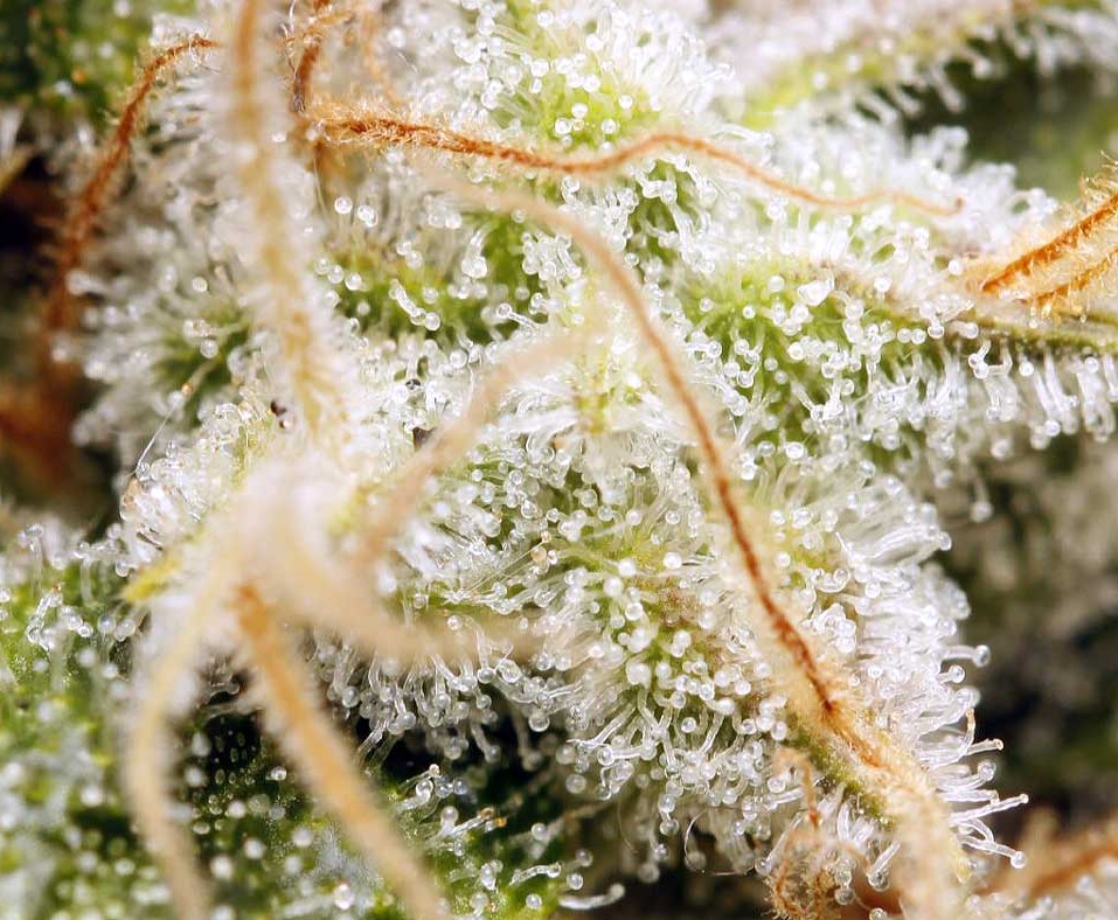When discussing cannabis and medical uses, scientists, journalists, patients, and activists generally focus on the plant’s most famous components: THC and CBD. Flavonoids, another class of chemical compounds found in weed, are often overlooked because they don’t confer any observably cool qualities like flavor, scent, or psychoactivity.
A new study, published in the August edition of Phytochemistry, recently mapped out the biochemical pathways to produce two cannabis-specific flavonoids, cannflavin A and cannflavin B. Both compounds have, in the past, been shown to be 30 times more effective at reducing inflammation than aspirin. In comparison, THC is equally as effective as aspirin when controlling pain.
“There’s clearly a need to develop alternatives for relief of acute and chronic pain that go beyond opioids,” said Dr. Tariq Akhtar, PhD, who co-authored the study, in a press release. Flavonoids “are non-psychoactive, and they target the inflammation at the source, making them ideal painkillers.”
It’s the non-intoxicating part that makes cannabis compounds like flavonoids or CBD incredibly appealing to medical researchers. Opioid painkillers such as Percocet, Vicodin, and Oxycontin are habit-forming largely because they induce strong feelings of euphoria, which contributes to the risk of forming a deadly addiction. In 2017, President Trump declared the US opioid crisis as a national emergency, and the crisis continues to this day.
Flavonoids, which are also found in fruits, vegetables, fungi, and herbs, don’t trigger addictions. And they certainly can’t get anyone high.
Akhtar’s study, conducted with a team of other molecular biologists at the University of Guelph in Ontario, looked at how the cannabis plant makes its two exclusive flavonoids. Their study determined that just one enzyme makes both cannflavin A and B, and they traced the flavonoid’s production from start to finish.
With the study’s findings, companies could produce cannflavin A and B through several biotechnological methods, including genetically modified yeast or E. coli production. Furthermore, cannabis could be traditionally bred or genetically engineered to generate higher-than-average levels of flavonoids for medical purposes, too.
Why go through all the trouble of artificially manufacturing flavonoids that are naturally produced by cannabis? The plant doesn’t produce much of either cannflavin A or B, so farming it from weed would be an expensive and time-consuming endeavor.
“This is very typical of many natural products that have therapeutic value,” Akhtar told the Toronto Star. “And you can’t just grow fields and fields of the plant and expect to get enough of the bioactive compound out of them, because they’re in such low amounts and, since they’re complex chemicals, they’re hard to get at. Extracting and purifying them is possible, but it’s not economically viable.”
Follow Randy Robinson on Twitter











